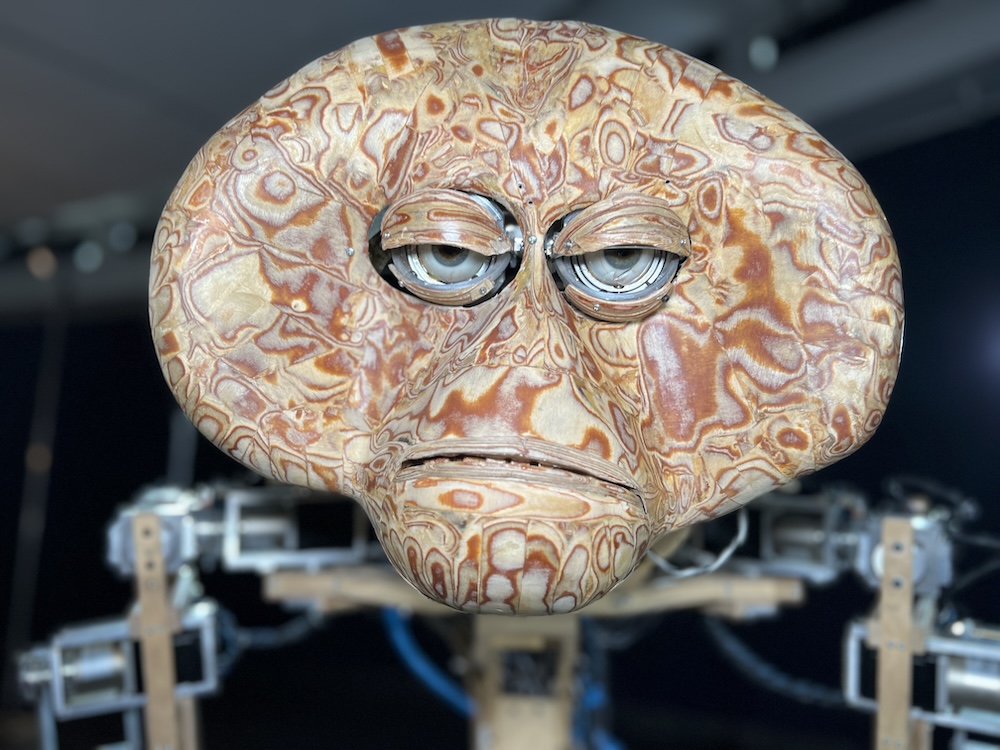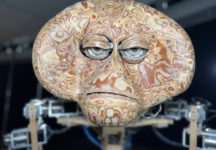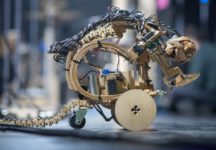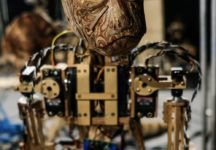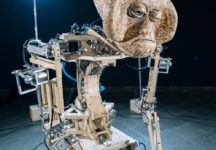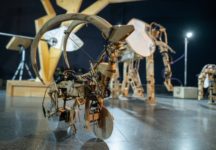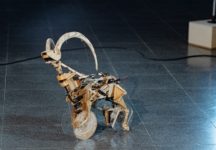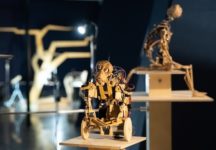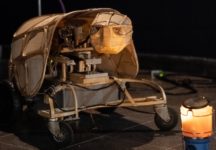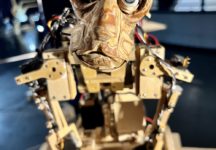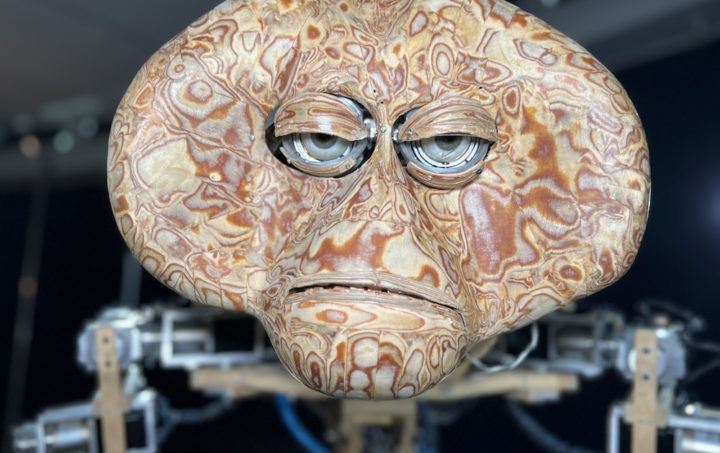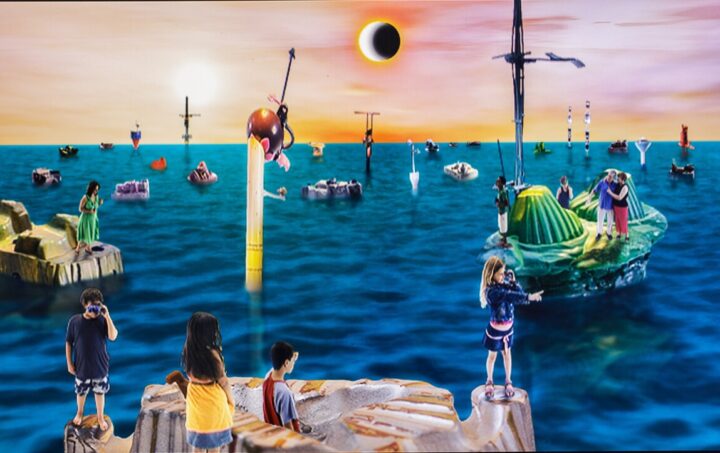Safari at the Museum
Bat Yam Museum of Art
01.06.2025 - 31.12.2025Dates: 04.07.2023 — 31.10.2023
Curator: Hila Cohen Schneiderman
About the Exhibition
Safari at the Museum: A Journey through the Robotic Animal Sanctuary, Amit Drori’s solo exhibition, offers a rare opportunity for a close view of mechanical animals created for the stage. Bat Yam Museum of Art’s distinctive round building outlines a trail that leads visitors to the depths of an artificial wildlife reservation. The reservation is populated by mechanical sculptures constructed with anatomical accuracy in an almost extinct craftsmanship that brings them to life with movement and human expression. The sound and lighting that envelop the safari complete the museum’s transformation into a playful and imaginative environment.
The safari tour begins at the entrance hall, where the shipping boxes of the mechanical animals are collected as they return from their travels around the world. The sealed boxes hum with curious sounds, beckoning visitors to take a peek inside and imagine their contents. On the upper floor, we meet the animals face to face, among them Eve the Great Heron, floating amidst the followers’ flashlight assembly, moving in unison like a flock of birds, a wheat field, or dozens of eyes that light our way; the surilis that exchange meaningful glances next to the music boxes that fill the space with sound; and the troop of tamarins huddled together by the large alpha monkey who turns to us with a piercing gaze, as though wondering about the fate of nature in this technological age. The monkeys’ expressive eyes are human glass eyes made in Germany in the late 19th century.
The exhibition came about through a process that started in 2009 when Drori began developing mechanical animals for the show Savanna, in collaboration with designer Noam Dover. The process continued through another collaboration, this time with artist Ofer Laufer on the show Monkeys developed at Bat Yam’s Fest’Factory creatives hub. The animals are painstakingly handcrafted over hundreds, at times even thousands of hours. In this type of extensive and thoughtful work process, a unique relationship is formed between the creator and his creation, imbuing it with profound meaning. Initially, the animals’ operating mechanisms were hidden, creating a naturalistic appearance. However, over time, the operating mechanisms – the animatronics’ anatomy – started to surface: the engines are the muscles; the controllers are the brain; the wiring system stands for the tendons, veins, and nervous system. This duality between the mechanical and the figurative allows us to shift and alternate between the animal and the machine, between the natural and the artificial, and to be swept away by the magic of Amit Drori’s enchanting and mysterious world.
Photography: Nadav Chomsky. Video: Leo Liberman

